New York Diary: Stephen Shore at MoMA
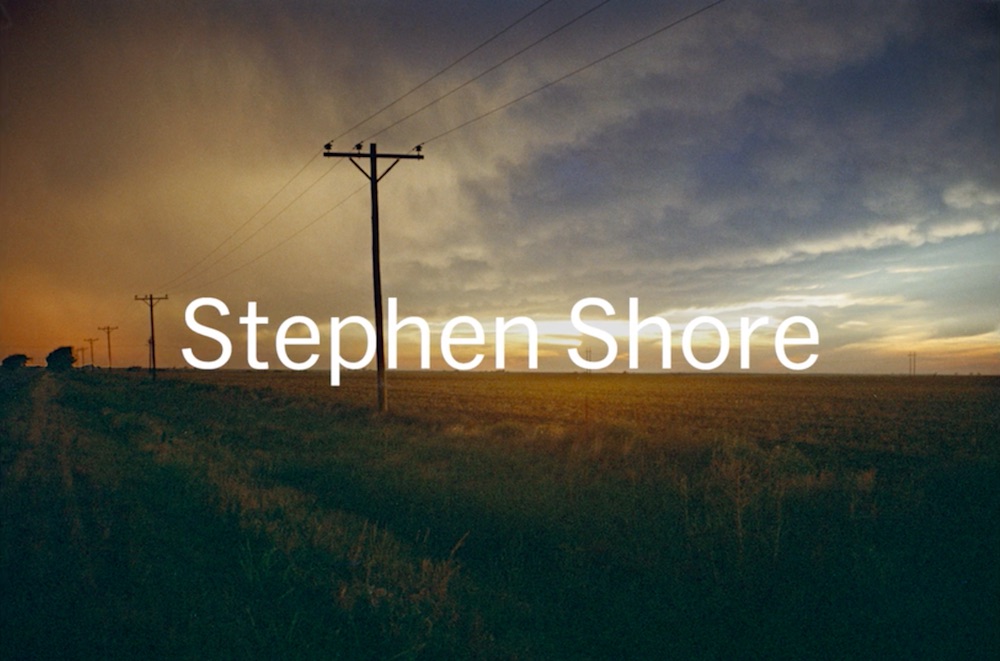
I managed to catch the last day of the Stephen Shore exhibition at MoMA. Described as "the most comprehensive exhibition ever organized of photographer Stephen Shore’s work", I was glad I had an opportunity to see his work exhibited chronologically from when he first started until his current works.
The exhibition tracks the artist’s work chronologically, from the gelatin silver prints he made as a teenager to his current work with digital platforms. Stephen Shore establishes the artist’s full oeuvre in the context of his time—from his days at Andy Warhol’s Factory through the rise of American color photography and the transition to large-scale digital photography—and argues for his singular vision and uncompromising pursuit of photography’s possibilities. The exhibition will include hundreds of photographic works along with additional materials including books, ephemera, and objects.
Born in 1947, Shore spearheaded the New Color Photography movement in the United States in the 1970s, and became a major catalyst in the renewal of documentary photography in the late 1990s, both in the US and Europe, blending the tradition of American photographers such as Walker Evans with influences from various artistic movements, including Pop, Conceptualism, and even Photo-Realism.
Shore’s images seem to achieve perfect neutrality, in both subject matter and approach. His approach cannot be reduced to a style but is best summed up with a few principles from which he has seldom deviated: the search for maximum clarity, the absence of retouching and reframing, and respect for natural light. Above all, he exercises discipline, limiting his shots as much as possible—one shot of a subject, and very little editing afterward.
The exhibition includes the following sections and I've included the wall text for each section and a few of the works from the exhibition.
The Early Years
1961–1967
Stephen Shore (American, born 1947). Untitled. 1964. Gelatin silver print, 9 1/2 × 6 1/2" (24.1 × 16.5 cm). Courtesy the artist and 303 Gallery, New York
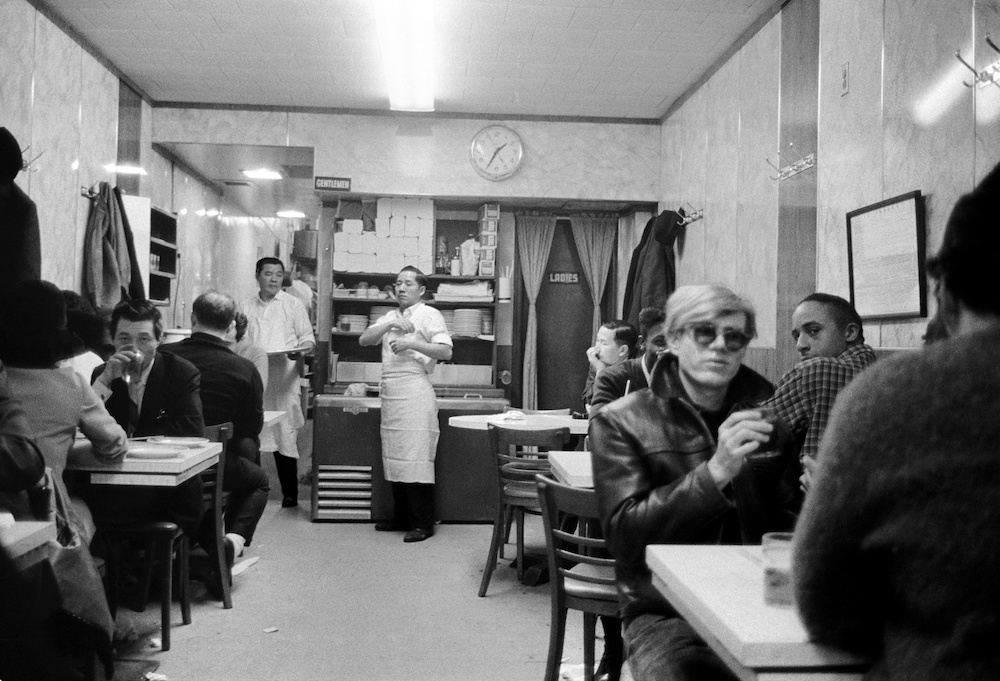
Stephen Shore (American, born 1947). _1:35 a.m., in Chinatown Restaurant, New York, New York.z- 1965–67. Gelatin silver print, printed c. 1995, 9 × 13 1/2" (22.9 × 34.3 cm). Courtesy the artist and 303 Gallery, New York
Shore started developing negatives of pictures his parents had taken when he was only six. He got his first camera at the age of nine and sold three prints to The Museum of Modern Art at fourteen. His first feature article was published in the popular magazine U.S. Camera in 1963, when he was only fifteen. Titled “Angry Young Man with a Camera,” it reveals a New York street photographer, mainly interested in portraiture and aspiring to create a book about Forty-Second Street. Influenced by the work of Robert Frank and Dave Heath, Shore’s images were generally taken in black and white with a small camera and demonstrate a photographic vocabulary that is stunningly assertive for an adolescent— fragmented and a little raw, underlining the staccato rhythm of the street, syncopated and almost jazzy.
In the early 1960s Shore became interested in film, both narrative and experimental. He would skip school to take in features at independent theaters including the Film-Makers’ Cinematheque, where he showed his short film Elevator and met Andy Warhol. From spring 1965, when Shore dropped out of high school, until 1967, he photographed at Warhol’s studio, the Factory, first on an almost daily basis and then more sporadically. Some 170 of his images were included in the catalogue of the 1968 Warhol exhibition at the Moderna Museet in Stockholm. Spending time with Warhol proved to be fundamental for Shore, sensitizing the very young photographer, who had no theoretical grounding, to different methods of working and new ways of looking at the world.
The Nature of Photographs
In 1982 Shore started directing the photography program at Bard College, one hundred miles north of New York City. He deliberately oriented the program toward straight photography at a time when most teachers were emphasizing manipulated and constructed photography. Since then, teaching has been at the core of his activity as a photographer.
It was also, notably, the basis of The Nature of Photographs, the book he published in 1998. “The aim of this book, then, is not to explore photographic content,” he explained, “but to describe the physical and formal attributes of a photographic print that form the tools a photographer uses to define and interpret that content.” In choosing to include some of his own pictures alongside those by others, Shore presented a very personal history of photography; reading between the lines, one can discover his trajectory as a photographer, his influences and affinities. Some of the images reproduced in the book are presented here, along with Shore’s texts (recorded as audio).
All the Meat You Can Eat
1971
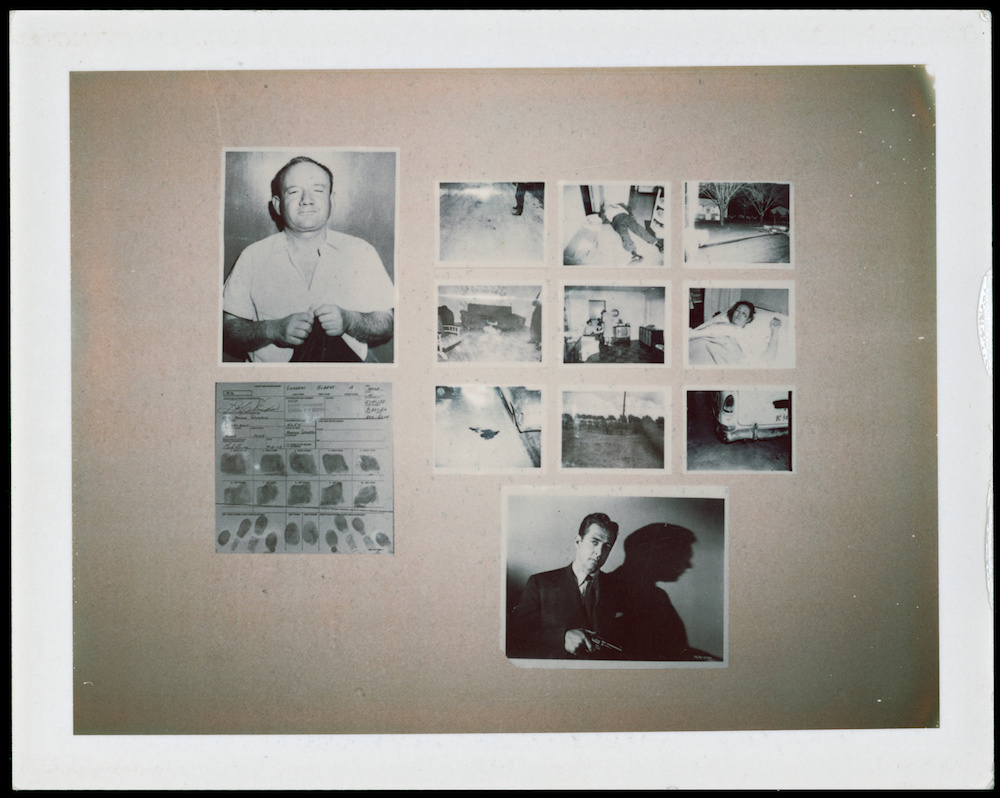
Installation view of All the Meat You Can Eat, 98 Greene Street Loft, New York, November 8–20, 1971
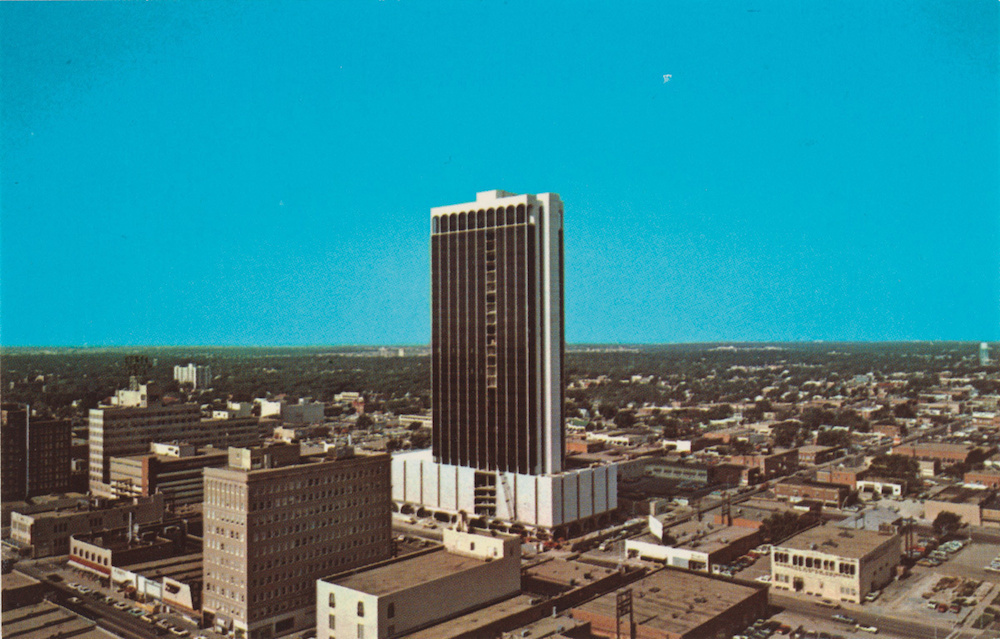
Stephen Shore (American, born 1947). American National Bank Building, 7th & Tyler. 1971. Offset lithograph, 3 1/2 x 5 1/2" (8.9 x 14 cm). The Museum of Modern Art, New York. Gift of the artist. 2013
The exhibition All the Meat You Can Eat took place in November 1971, at the 98 Greene Street Loft, a non-commercial alternative space in SoHo. The show embraced a century of photography and was composed largely of found images collected by Shore and two friends: Weston Naef, then a curator at the Metropolitan Museum of Art, and Michael Marsh. It also included images by Shore, such as shots taken with a Mick-a-Matic camera (a popular Mickey Mouse shaped children’s camera) and color photos that would serve as the basis for the postcards in his Greetings from Amarillo, “Tall in Texas” series.
The presentation was deliberately dissonant; genres mixed and clashed with no apparent logic, showing the diversity, the richness, and, sometimes, the kitsch of vernacular photographic forms. As the photography critic Gene Thornton noted in the only published review of the exhibition, these images were selected not for their aesthetic appeal but for their contribution to the all-and- sundry nature of this production, a collection of pictures of a type rarely seen on the walls of galleries or museums. He wrote, “Stephen Shore’s fascinating selection is a healthy, if possibly somewhat unwelcome, reminder of the part that photography really plays in the world.” All the Meat You Can Eat was a declaration of love to all manner of photography and a true atlas of forms for Shore’s future work. The groupings and installation of images in this gallery are based on the original 1971 presentation.
1972–1973
Stephen Shore (American, born 1947). Amarillo, Texas, July 1972. 1972. Chromogenic color print, printed 2017, 3 1/16 × 4 5/8" (7.8 × 11.7 cm). Courtesy the artist and 303 Gallery, New York
In the early 1970s, Shore, eager to create images that would be more in tune with his time, decided to turn to color photography, a technique that was then still largely overlooked by art photographers. In March 1972, using a Rollei 35mm camera equipped with a flash mounted beneath it, he started taking snapshots of his daily life. In June of the same year he embarked on a road trip to the southern United States, and for two months he cataloged his everyday existence: unremarkable buildings, main streets, highway intersections, hotel rooms, television screens, people’s faces, toilet seats, unmade beds, a variety of ornamental details, plates of food, shop windows, inscriptions, and commercial signs.
In September and October 1972, approximately 190 images from the series were shown at Light Gallery in New York under the title American Surfaces. The display here echoes that initial presentation, where the small Kodacolor prints were hung unframed, attached directly to the wall in a grid of three rows. Shore continued the series for more than a year and a half; it came to include a number of images made in New York and, over the course of subsequent travels, other places in the United States as well as in London and the Virgin Islands. American Surfaces exists at the juncture of several of Shore’s preoccupations and influences at the time: a taste for repetitive patterns, a strong interest in amateur photography, and a fascination with the aesthetics of pop culture and the vernacular.
Commissions and Editorial Work
1975–1981
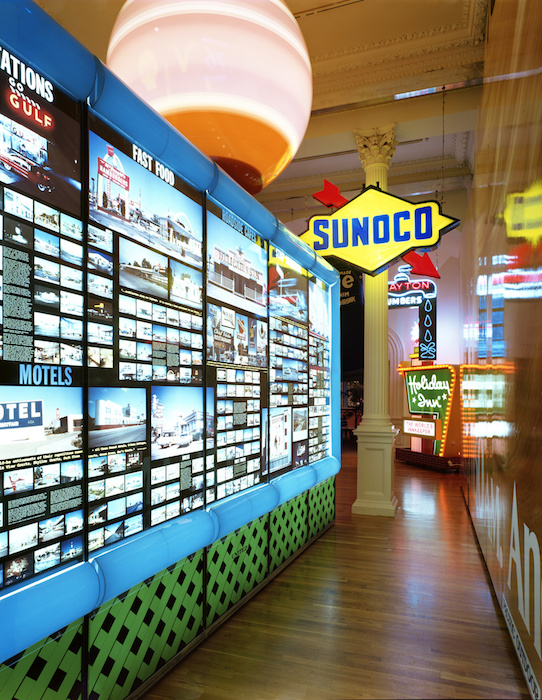
nstallation view of Signs of Life: Symbols in the American City, organized by Robert Venturi, Steven Izenour, and Denise Scott Brown, Renwick Gallery, Washington, D.C., February 26– October 31, 1976. Photo: Stephen Shore
While working on his series Uncommon Places, Shore began to accept photographic commissions, both for editorial work and for institutions and companies. He found these commissions a welcome and beneficial exercise. Shore has often said that by requiring him to focus on a specific theme and capture a place or subject in a few images, some of the commissioned work served as an antidote to his innate formalism.
If commissions like the one on Claude Monet’s garden in Giverny seem quite distant from Uncommon Places, many others show an affinity with that series in their attention to both architecture and a certain “Americanness.” Courthouses documented courthouses in small towns across the country, while the work Shore did for the 1976 exhibition Signs of Life: Symbols in the American City, organized by architects Robert Venturi, Steven Izenour, and Denise Scott Brown, focused on contemporary vernacular architecture. And Shore featured one of the images of the Yankees that he took for an AT&T commission in his Uncommon Places book.
Some commissions for magazines, including those for Fortune and Geo, alternated between urban landscapes, portraits, and architectural details, following in a direct line from Uncommon Places. Meanwhile, the invitation in 1981 to document (along with several other photographers) the filming of John Huston’s Annie in Burbank, California, led to a series of images whose common element is the architectural decor itself. Shore would include a number of commissioned photographs in his personal body of work, suggesting that the borders between the two groups of images were very porous.
2003 to Today
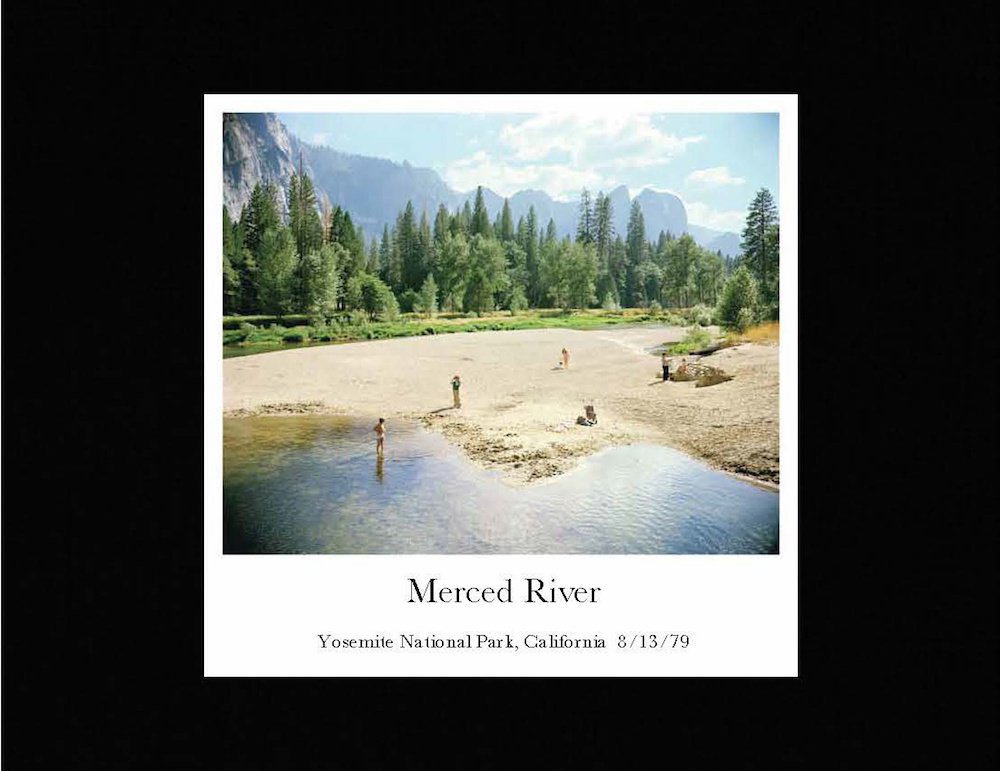
Stephen Shore (American, born 1947). Merced River: Yosemite National Park, California 8/13/79. 2003. Book, printed 2017, 8 5/8 × 11" (21.9 × 27.9 cm). Courtesy the artist and 303 Gallery, New York
Shore’s interest in democratic and popular ways of producing and disseminating photographic images has manifested in various ways throughout his career, from his use of amateur cameras like the Mick-a-Matic and the Rollei 35 in the early 1970s to his enthusiasm for new digital technologies in the 2000s.
He embraced print-on-demand bookmaking in 2003, when the technique was new, producing eighty-three small books over the course of seven years. All were printed in limited editions of twenty copies, making them similar to artists’ books. With rare exceptions, all are time capsules, made in a single day or less. The ease of production, speed of execution, democratic nature of the technique used, and modesty of the finished product seem in direct line with the snapshots of American Surfaces.
Since 2014, the bulk of Shore’s personal photographic production has been through Instagram. With the social networking app, Shore has reestablished a rapid, instantaneous practice, one that requires him to be on constant alert. “Paying attention all the time is a very interesting way to go through a day,” he has said.
Archaeology
1996
In the 1990s, Shore became fascinated by archaeology, reading extensively on the subject in journals and books and undertaking various photographic projects around excavation sites. The first of these took place in Israel in 1996, in Hatzor, a town north of the Sea of Galilee between Ramah and Qadesh, and Ashkelon, an ancient port about thirty-five miles south of Tel Aviv. In the excavation sites of these vanished cities, Shore was especially interested in the human dimension, domestic and secular, seen in bones, pottery, and vestiges of dwellings and shops.
Beyond this series, one could say that many of Shore’s images have an archaeological aspect. Although they are often devoid of human presence, they capture traces of everyday life and focus on humanity—our habits, movements, and meals; the places where we live, work, and play. Together his photographs serve as a kind of archaeological survey, whether of historic societies or of the contemporary world in the making.
Serial Images
1969–1970
After essentially taking a break from photography in 1968, while he worked with his father in investment banking, Shore returned to his practice in 1969 with serial black-and- white projects, which gave his work a more detached and intellectual foundation. Shore produced many of these photographs in Amarillo, Texas, in the summer of that year, with his friend Michael Marsh as his main model. They show Shore striving to free himself from certain photographic conventions: the concept of photography as the art of creating isolated and “significant” images, perfect framing, and the expressive subjectivity of the photographer.
The principle of multiplicity prevails in Shore’s work of this period—series, suites, and sequences that resist all narrative temptation. Executed according to rules that Shore established for himself ahead of time, these works systematically investigate the two main parameters of the photographic process: time and space. Shore did not exhibit with Conceptual artists in the late 1960s and early 1970s, but when several of his serial black-and-white images were included in his solo exhibition at the Metropolitan Museum of Art in 1971, a few reviews explicitly identified similarities between his work and Conceptual art.
Uncommon Places
1973–1982
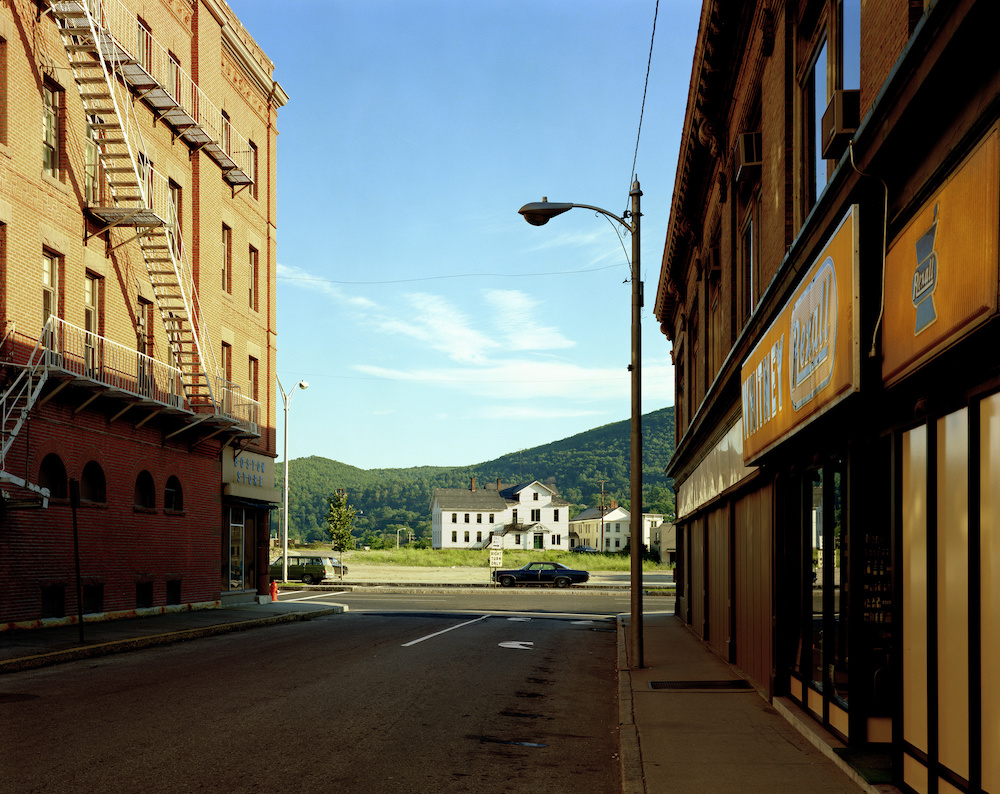
Stephen Shore (American, born 1947). Holden Street, North Adams, Massachusetts, July 13, 1974. 1974. Chromogenic color print, printed 2013, 16 7/8 x 21 1/4" (42.8 x 54 cm). The Museum of Modern Art, New York. Purchase, 2013
Begun in 1973, during a period of accelerated change in the national landscape, especially in areas of suburban sprawl, and completed almost ten years later, Uncommon Places deals with the same themes as Shore’s previous series, American Surfaces. This continuity, however, is counterbalanced by a major technical change. With Uncommon Places Shore made the transition from a small handheld 35mm camera to a large view camera, first a 4-by-5 in 1973, and then, starting in 1974, an 8-by-10. As Shore has explained, this change was the result of his desire to make larger prints: he had found it impossible to enlarge some of his images from American Surfaces without a massive loss of quality due to the small size of 35mm negatives.
Compared to American Surfaces, Uncommon Places features fewer details and close-ups, a more detached approach, and an abandonment of the flash. All of the photographs are taken in the daytime, using only natural light, a practice from which Shore would rarely depart in his later work. Beyond these technical features, the quick, diaristic, almost narrative quality of American Surfaces yields to a slower, more removed quality in Uncommon Places, calling for a more contemplative reading of the individual images.
Before being published as a book in 1982, the series was widely exhibited both inside and outside the United States, making Shore one of the most prominent figures of the American New Color Photography movement and linking his work to a generation of photographers focused on the banal, human-made American landscape.
In the Wilderness
1979–1993
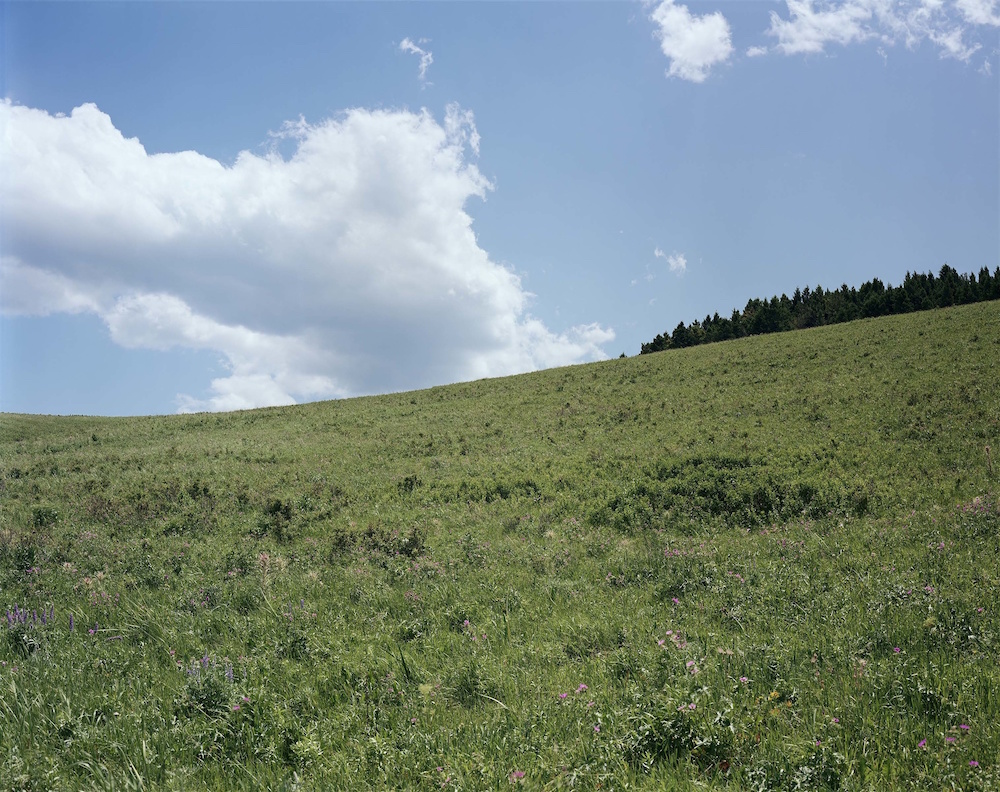
Stephen Shore (American, born 1947). Gallatin County, Montana, August 2, 1983. 1983. Chromogenic color print, printed 2017, 36 × 45" (91.4 × 114.3 cm). Courtesy the artist and 303 Gallery, New York
Starting in the late 1970s, Shore gradually abandoned urban and suburban areas and turned to the natural landscape, a subject he would concentrate on almost exclusively during the next decade. There were American landscapes: those of Montana (1981–83), where he settled with his wife in 1980; Texas (1983–88); and the Hudson Valley (1984–87), where he moved in 1982. And there were those further afield: the highlands of Scotland (1988); the Yucatán, in Mexico (1990); and Luzzara, in Italy (1993).
Far from expressing a simple search for local charm, these pictures correspond closely to his definition of the photographic shot as a “problem to solve” rather than an image to “compose.” Without all the components that allowed him to construct a scene in the urban landscapes of the 1970s—especially the vertical elements, from street lamps to telegraph poles—how does one structure an image with perspective to create scale and depth? To make the exercise even more challenging, Shore chose what he described as “open, almost uninflected scenes in which to experiment with space.” They are landscapes guided not by a quest for the picturesque but by an experimental spirit.
Historical Times: Israel and the West Bank and Ukraine
2009–2013
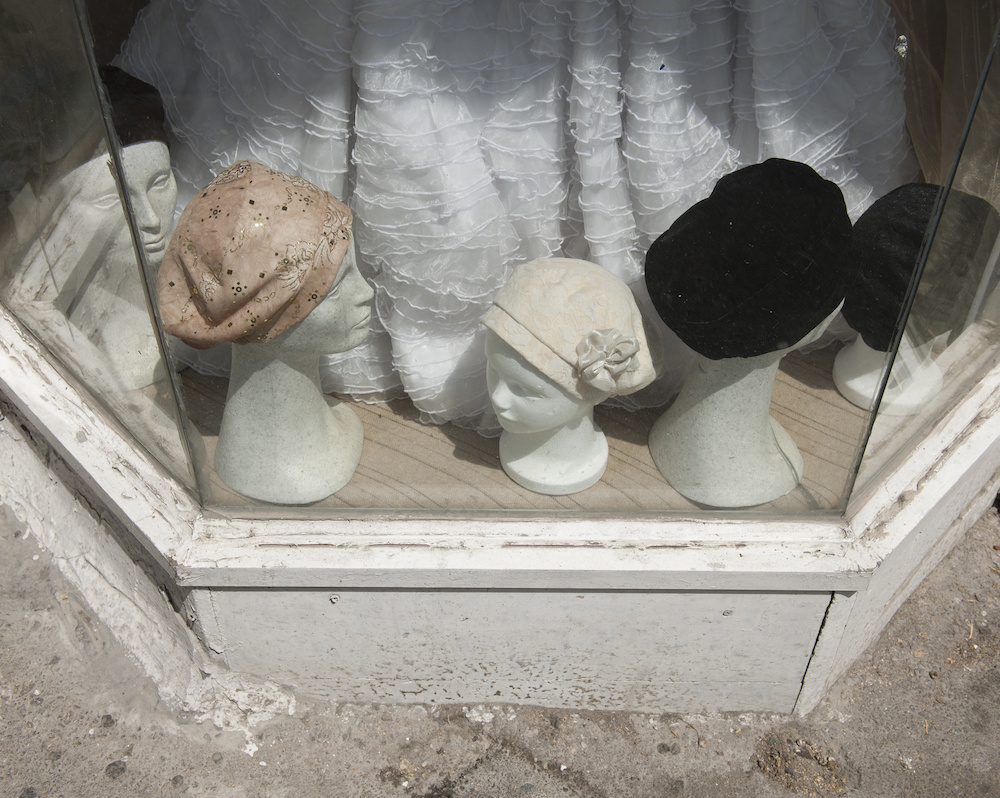
Stephen Shore (American, born 1947). Jerusalem, September 12, 2009. 2009. Chromogenic color print, printed 2017, 16 × 20" (40.6 × 50.8 cm). Courtesy the artist and 303 Gallery, New York
Shore’s two recent long-term photographic projects were made outside the United States, the first in Israel and the West Bank and the second in Ukraine. In different ways, they both add two new dimensions to his work: a reflection on history and, less directly, an exploration of his Jewish heritage (his paternal grandfather emigrated from Ukraine to the United States at the end of the nineteenth century).
In 2009 Shore was invited to Israel to work on a documentary project titled This Place, which was intended to show, through the lenses of twelve foreign photographers, the region in all its diversity and contradictions. Between September 2009 and March 2011, Shore went to Israel and the West Bank five times, photographing throughout the entire territory. Consisting of color images of landscapes, people, and places, Shore’s project mixes various temporalities, bringing together the short term of humans and their activities and the long term of the earth and landscapes.
The photographs Shore took in Ukraine in the summer of 2012 and the fall of 2013 take as their subject the country’s Jewish community, specifically Holocaust survivors who are assisted today by the Survivor Mitzvah Project, an organization based in Los Angeles. In a break from his norm, Shore structured the Ukraine series around the human figure, depicting a world on the brink of disappearing, as if frozen in time since World War II.
Images, video, text via:
www.moma.org/calendar/exhibitions/3769


